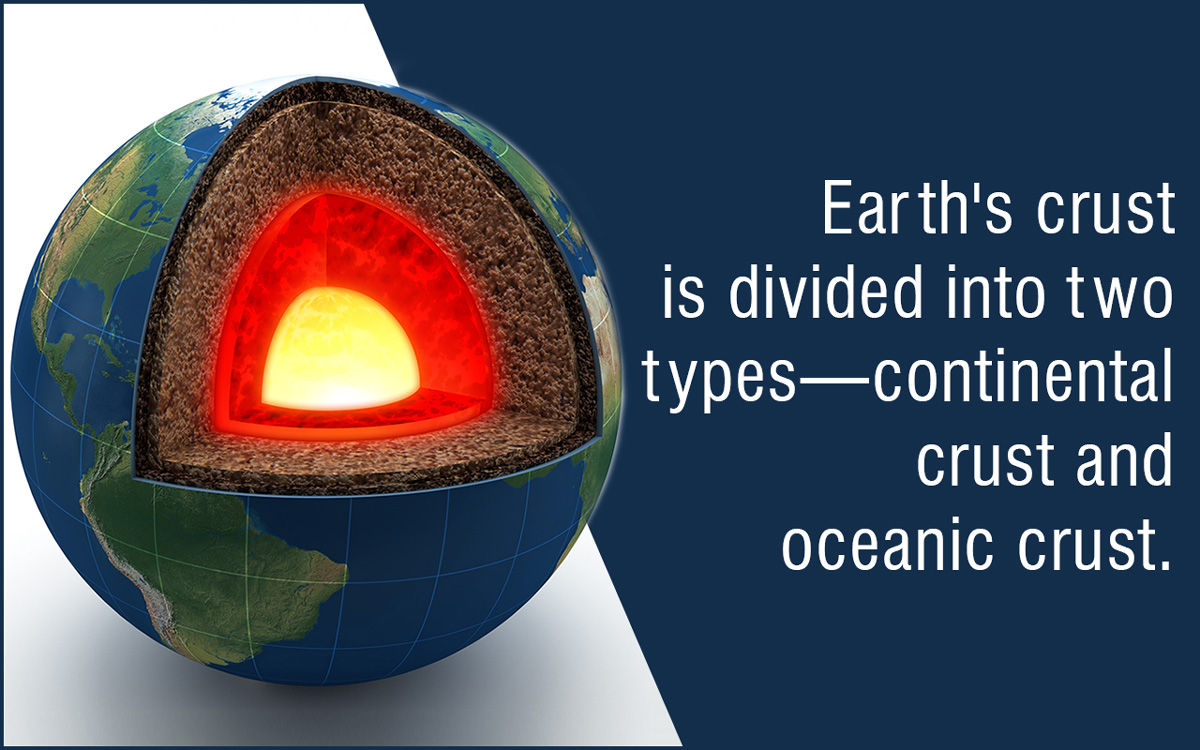
Going through the compilation of some facts about the Earth’s crust given below will help you get well-versed with this layer of the planet – the outermost layer of the Earth to be precise. Read on…
Most of us know that the interior of the Earth is made up of four different layers; the crust, mantle, inner core and the outer core. You may also come across some sources which stress on the fact that the Earth’s interior is made up of three layers; the crust, mantle and the core. (These sources further divide core into outer core and inner core.)
Few of us are also well-versed with the fact that three of the four main layers of the Earth are in solid state, while the fourth one is in liquid state. Beyond this, however, our knowledge about the Earth’s interior hits a roadblock; and this loophole is exposed when we try to get to the details of the subject. The crust, i.e. the outermost layer of the planet, happens to be one such less-known attribute of our planet, and we will be stressing on the same from here on.
Interesting Facts about the Earth’s Crust
In geological studies, the term ‘crust’ refers to the outermost layer of the planet or other celestial bodies such as natural satellites. In case of the Earth, it is the layer on which we live, typically characterized by the presence of gelogical landforms such as mountains, plateaus, seabed, etc. The Earth’s crust is made of three types of rocks; igneous rocks, sedimentary rocks and metamorphic rocks. It is the thinnest layer of the Earth, and typically forms mere 1 percent of the total volume of the planet. As you go through more of such Earth’s crust facts given below, you will come across some of the most amazing attributes of our planet that you must have never heard before.
- In a broad sense, the Earth’s crust is divided into two types – continental crust, which forms continents and continental shelves, and oceanic crust, which forms the surface of the oceans basins on the planet. While the continental crust is made up of felsic rocks or sial (rich in silicon and aluminum), oceanic crust is made up of mafic rocks or sima (rich in iron and magnesium).
- In terms of volume, the continental crust-oceanic crust ratio stands at 70:30, with the former constituting for 70 percent of the crust. The thickness of the Earth’s crust varies from one region to another; with the thickness of continental crust ranging between 20-30 miles, and oceanic crust ranging between 3-6 miles on an average, and that explains the 70:30 ratio between the two.
- In regions like the Himalayas in the Indian-subcontinent and Andes in South America, the thickness of this layer exceeds 20 miles; and this can be attributed to crustal thickening as a result of igneous activity and tectonic over-thrusting during collision.
- As in case of the crust of planets like Mercury, Venus or Mars, or that of the Moon, even the Earth’s crust is formed as a result of igneous processes, and that explains why it is richer in incompatible elements as compared to mantle.
- As we go deeper inside the crust, the temperatures begin to increase; and typically reach somewhere between 392°F and 752°F at its boundary with the mantle. The temperature rise is recorded to be somewhere around 50°F for every km in the upper crust; and from thereon the geothermal gradient becomes even steeper.
- The outer crust of the Earth is broken up into regions known as tectonic plates. The movement of these plates, which float on top of molten rock in the interior of the Earth, tends to trigger earthquakes and form mountains on the planet.
- The Earth’s crust displacement theory, which highlights polar shift and states that a catastrophic shift of the Earth’s lithosphere in somewhere around 10,000 BC., triggered the formation of Antarctica, was put forth by Charles Hapgood.
- Interestingly, the crust happens to be the only layer of the Earth’s interior which can be studied by drilling. Earth’s core and mantle, on the other hand, are mapped by studying the behavior of seismic waves beneath the surface of the Earth.
- The deepest hole ever drilled in the Earth’s crust, or the deepest artificial point on Earth, happens to be Kola Superdeep Borehole (KSDB-3) in the Kola Peninsula, in Russia, with a depth of 12,262 meters (40,230 ft).
- Even though the crust doesn’t quite have direct influence on the lifeforms, it indirectly means a lot to all the species on the planet as several natural resources come from it. At the same time, the movement of crust is also known to play a crucial role in determining the topography of the planet.
As fascinating as all these facts may sound, they just constitute a small part of the broad chapter of the facts about planet Earth. Did you know that the Earth takes 23 hours, 56 minutes and 4.091 seconds, and not 24 hours, to complete one rotation? Or that it takes the Earth 365.2564 days to complete a revolution, and this extra period of .2564 days causes every fourth year to be a leap year? It is virtually impossible to know each and everything about the Earth, but it is undoubtedly amazing to amass as much knowledge about it as you can.
